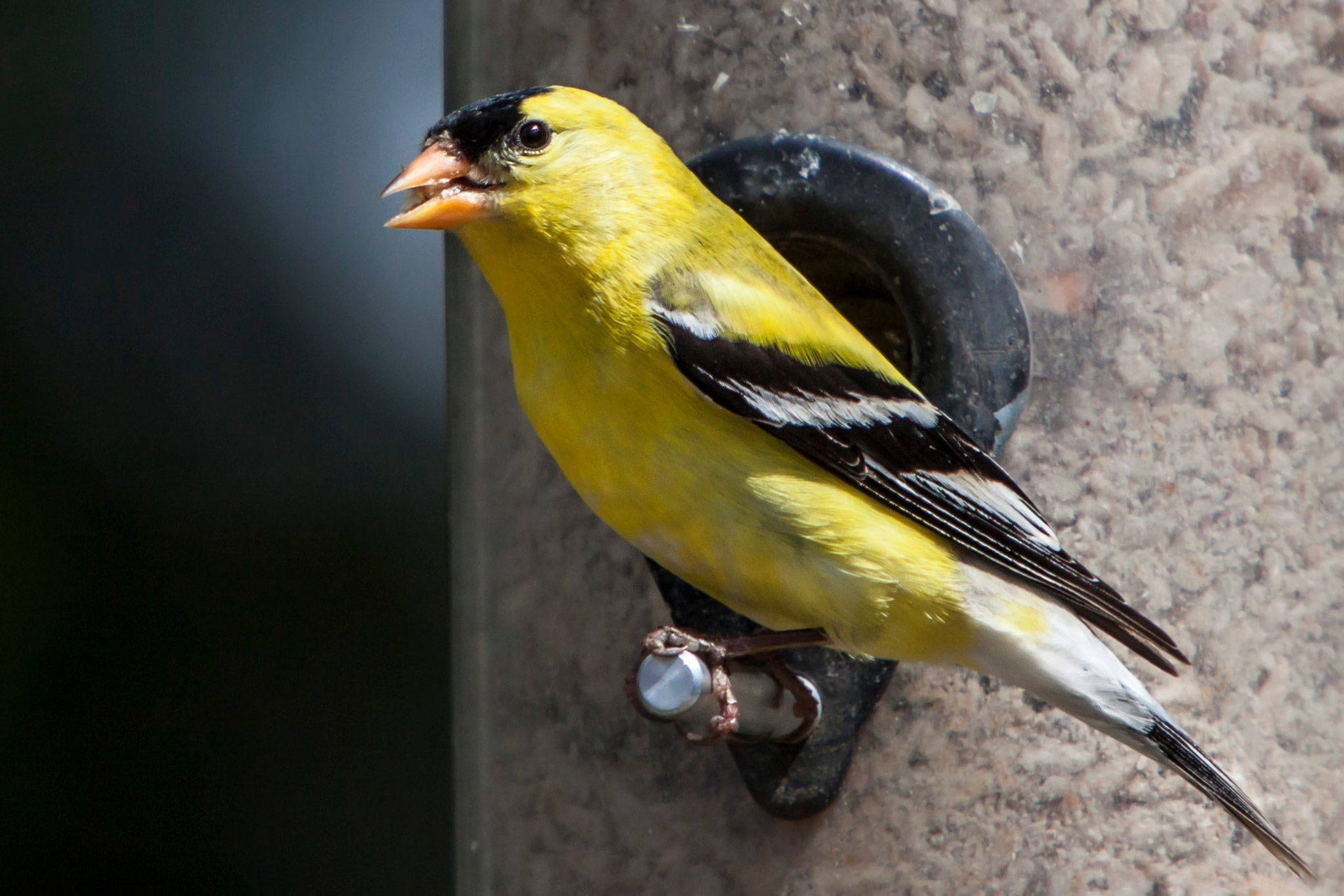From time to time the American Ornithologist’s Union (AOU) changes the Latin name of a bird to better reflect new information, placing a bird in a new clade. (clade – n. A grouping of organisms made on the basis of their presumed evolutionary history, consisting of a common ancestor and all of its descendants.) This used to be Carduelis tristis but now huge numbers of references must be changed to reflect the change in name, and all who once memorized the earlier name must remember its new name. As Pooh would say, “Oh bother!” Thanks to Dasha Gudalewicz for this bright spot in a gray day.
General Description: The American Goldfinch is the state bird of Washington, New Jersey, and Iowa and you will have no problems spotting them right now. They are in full breeding plumage, with the males especially bright and very cheery in sight, actions, and sound. Not only is it a bright yellow, but the males have a black forehead, wings, and tail, with a white wingbar on each wing, and white on the inner webs of the tail. The females are yellowish gray-brown on top and varying shades of yellow underneath with two wingbars on each wing. The male has an orange bill and the female’s is pinkish-orange. They measure about 5 inches in length, with a 9 inch wingspan, and weigh approximately 0.46 ounces.
Habitat: Goldfinches can be found throughout Grays Harbor in open fields, river and forest edges, parks and cemeteries, and hogging the feeders in peoples yards. They prefer brushy and weedy habitats, especially those with thistles.
Behavior: Goldfinches are social birds and can often be found among flocks of Pine Siskins and Common Redpolls. They often feed hanging upside down from seed heads or sock feeders full of nyjer seed, but will eat black-oiled sunflower seeds with gusto. They move agilely over most surfaces as if born to it.
Diet: Almost exclusively seeds. Unlike most other birds that feed their young insects for the protein, goldfinches even feed their young regurgitated seeds. They do eat some insects, especially aphids.
Nesting: Goldfinches nest later in the season than most passerines; they have a late spring molt so are still recovering from that, plus they wait for the peak abundance of thistle seed. They often nest in colonies, and choose dense brush or upright branches of a shrub or tree in which to place their nest. The female builds a tightly woven, compact cup of plant fibers and spider webs and lines it with thistle-down, then incubates 4 to 6 eggs for 12 to 14 days. The male brings her food throughout the incubation period, and while she broods the young for the first few days after they hatch. Then both parents continue to feed the young, for 12 to 17 days after they leave the nest, then for a few more weeks until the young can manage on their own. The female may leave early, finding another mate and raising a second brood.
Migration: The northern populations may migrate south into the warmer southern states or they may stay in the general area, depending on the food source. They tend to follow the food.
Conservation Status: American Goldfinches are widespread and common, and numbers from Christmas Bird Counts reflect an upward trend in winter population numbers in the Pacific Northwest.
Where and When to Find in Grays Harbor: Goldfinches are common from mid-April to mid-October over most of the harbor. They prefer to breed below 500 feet elevation, but are less common on the outer coast in the winter, though still to be found. The sure-fire way to find out if you have any nearby is to hang a nyjer feeder and watch for them to find it. It shouldn’t take very long! Or let thistles grow in your yard in some spot in the sun…. a cheap and very efficient way to feed your birds.


